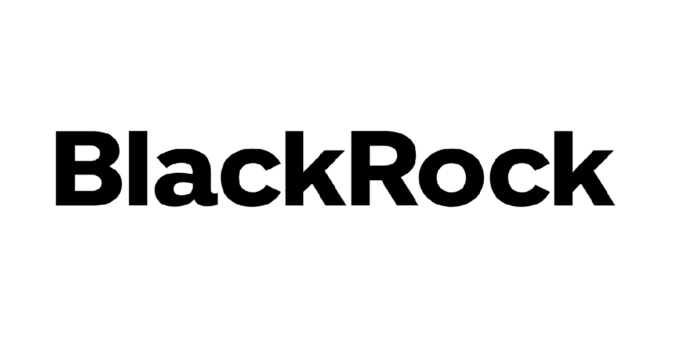NEW YORK, NY – BlackRock, Inc. (BLK), the world’s largest asset manager, closed at $1,082.15 on July 5, 2025, prompting investors to scrutinize its true worth in a dynamic financial landscape. A detailed valuation, drawing inspiration from Warren Buffett’s disciplined framework and enhanced by the McGrew Valuation Method, indicates an intrinsic value per share of $860.27. This suggests the stock is currently trading 25.8% above its intrinsic value, leading to a “Hold” recommendation for investors.
BlackRock, classified as a global investment management firm, operates a business model distinct from industrial or consumer goods companies. Its reliance on managing client assets and generating fees necessitates the use of Distributable Earnings for valuation, rather than Free Cash Flow, to accurately reflect its financial characteristics.
Deconstructing Distributable Earnings
To arrive at the intrinsic value, Distributable Earnings were calculated using BlackRock’s trailing 12-month (TTM) financial data. Distributable Earnings are defined as Net Income plus Non-Cash Charges, minus the Increase in Regulatory Capital Required for Growth.
- Net Income (TTM): $6,306,000,000
- Non-Cash Charges (Depreciation and Amortization): $612,000,000
- Increase in Regulatory Capital Required for Growth: Assumed to be zero due to lack of explicit reporting in provided data
Based on these figures, BlackRock’s Distributable Earnings totaled $6,918,000,000. This figure represents the cash available to shareholders after accounting for non-cash expenses and regulatory capital needs, forming the bedrock of the valuation methods.
Growth Classification and Adjusted Net Debt
An analysis of BlackRock’s 5-year Compound Annual Growth Rate (CAGR) of Distributable Earnings from 2020 to 2024 revealed a rate of approximately 5.38%. Given this CAGR is below 10%, BlackRock is categorized as a non-growth stock. Consequently, both valuation methods employed a conservative 3% growth rate for the first 10 years and a 2.5% perpetual growth rate thereafter.
Adjusted Net Debt was also a crucial consideration, accounting for BlackRock’s restricted cash, which often offsets client-related liabilities. As of March 31, 2025:
- Total Debt: $14,259,000,000
- Restricted Cash: $5,896,000,000
- Cash and Cash Equivalents: $7,747,000,000
The Adjusted Net Debt was calculated to be $616,000,000, reflecting the reduction in effective debt burden due to restricted cash.
Valuation Methods Yield Consistent Results
Both the Buffett-Inspired and McGrew Valuation Methods, leveraging the calculated Distributable Earnings and growth rates, produced identical intrinsic values for BlackRock.
The Buffett-Inspired Valuation Method projected Distributable Earnings over 10 years with a 3% growth rate, calculated a terminal value, and discounted all cash flows to the present using an 8% discount rate. This resulted in a Total Enterprise Value of $133,948,780,526. After subtracting the Adjusted Net Debt, the Equity Value was determined to be $133,332,780,526. With 155,022,449 shares outstanding , the intrinsic value per share was approximately $860.27. A 25% margin of safety price was calculated at $645.20.
The McGrew Valuation Method, due to BlackRock’s modest CAGR, utilized the same growth and discount rates, leading to an identical intrinsic value per share of $860.27 and a 25% margin of safety price of $645.20.
Valuation Status: Hold
Comparing the closing price of $1,082.15 to the intrinsic value of $860.27, the percentage difference is approximately 25.8%. Based on the valuation framework:
- Screaming Buy: Not met (Closing Price < $645.20)
- Buy: Not met ($645.20 ≤ Closing Price < $800.05)
- Hold: Met ($808.65 ≤ Closing Price ≤ $1,161.36)
- Overvalued: Not met (Closing Price > $1,169.97)
Therefore, the valuation status for BlackRock is “Hold”.
Financial Efficiency: ROE and ROTA
Beyond valuation, BlackRock’s operational efficiency was assessed through its TTM Return on Equity (ROE) and Return on Tangible Assets (ROTA).
- Return on Equity (ROE): With a TTM Net Income of $6,306,000,000 and Average Shareholders’ Equity (Q2 2024-Q1 2025) of $44,202,750,000 , BlackRock’s ROE stands at approximately 14.27%. This indicates solid returns on shareholder capital, competitive within the financial services sector where ROE typically ranges from 10% to 15%.
- Return on Tangible Assets (ROTA): Utilizing the TTM Net Income and Average Tangible Assets (Q2 2024-Q1 2025) of $93,533,750,000 , BlackRock’s ROTA is approximately 6.74%. This metric underscores the company’s efficient use of tangible assets and its ability to generate earnings without heavy reliance on intangible asset value, such as goodwill from acquisitions.
Conclusion for Investors
BlackRock’s strong fundamentals, evidenced by its robust ROE of 14.27% and ROTA of 6.74%, highlight its operational efficiency and market position. However, at its current closing price of $1,082.15, the stock is considered fairly valued rather than a bargain, trading 25.8% above its intrinsic value of $860.27.
Investors currently holding BlackRock shares can remain confident in the company’s financial strength. For those considering additional purchases, waiting for a price closer to the 25% margin of safety price of $645.20 is recommended. This analysis, grounded in rigorous financial data and conservative valuation methods, aims to provide a balanced perspective for navigating BlackRock’s investment potential.
Limitations and Considerations:
It is important to note certain limitations in this analysis. The assumption of zero increase in regulatory capital could potentially underestimate Distributable Earnings if significant regulatory requirements arise. Operating Gains/Losses were used as a proxy for derivative impacts, which may not fully capture specific derivative activities. Minor inaccuracies could also stem from aggregating annual Distributable Earnings from quarterly data. Finally, the assumption that significant restricted cash offsets client-related liabilities, thereby reducing Adjusted Net Debt, if incorrect, could lead to an overstatement of the debt adjustment.

